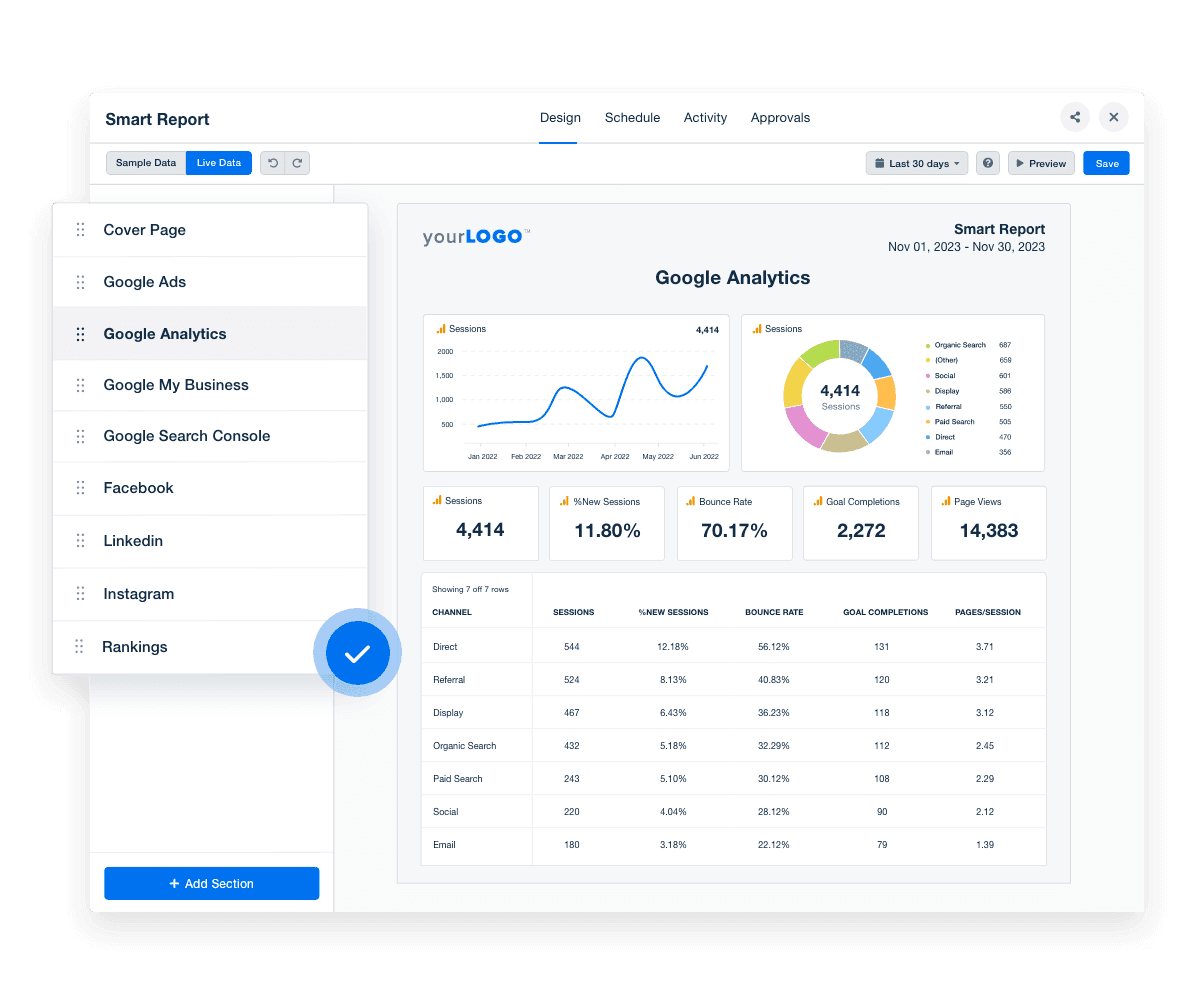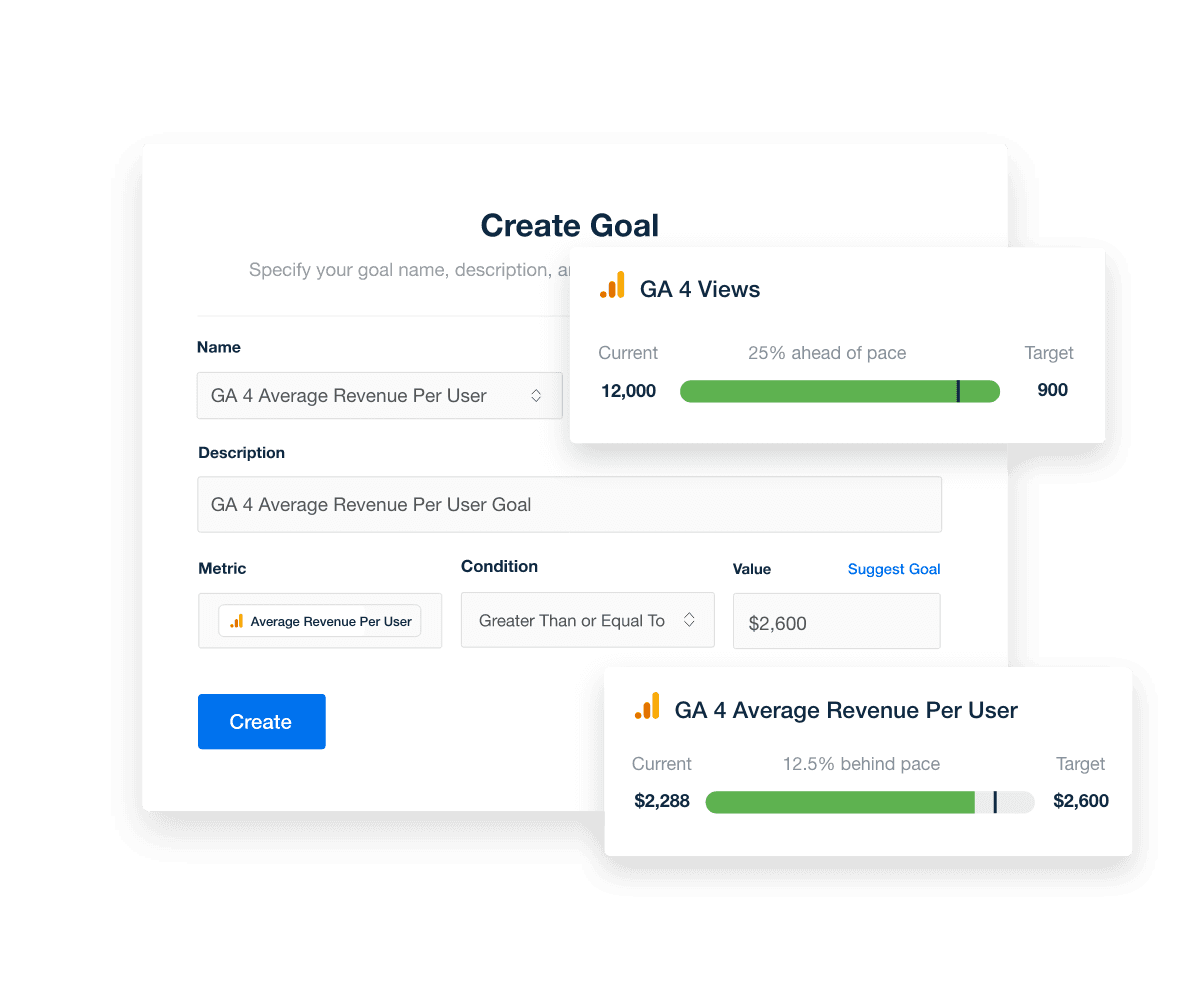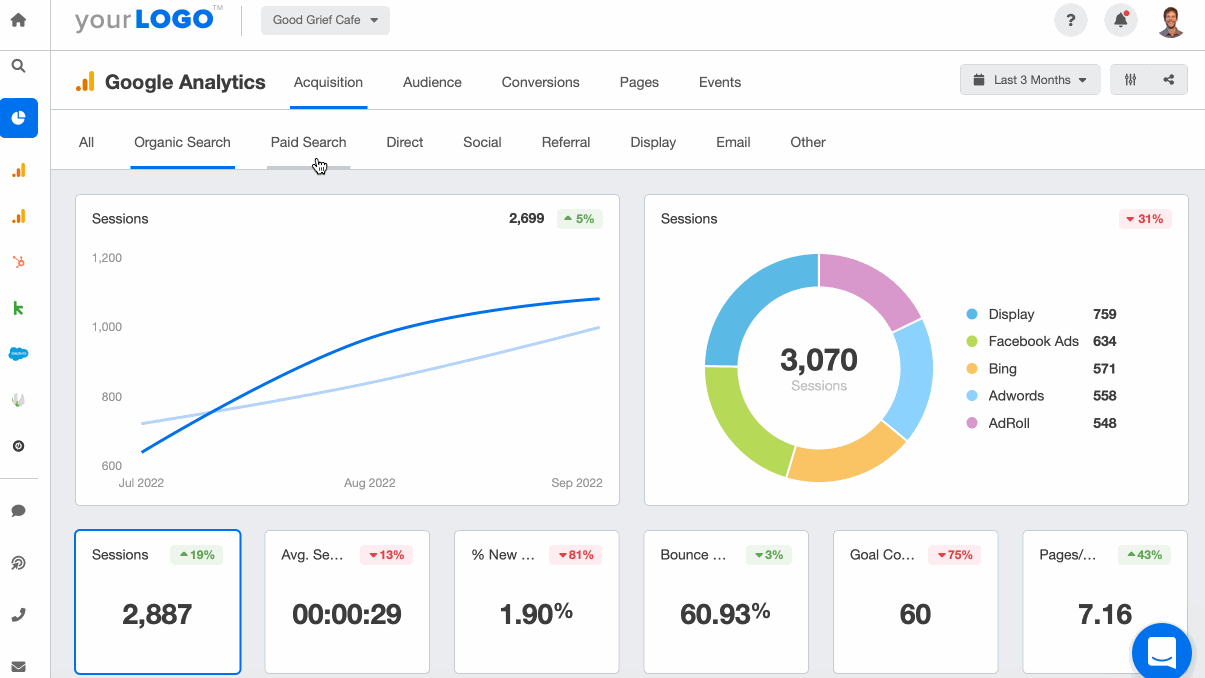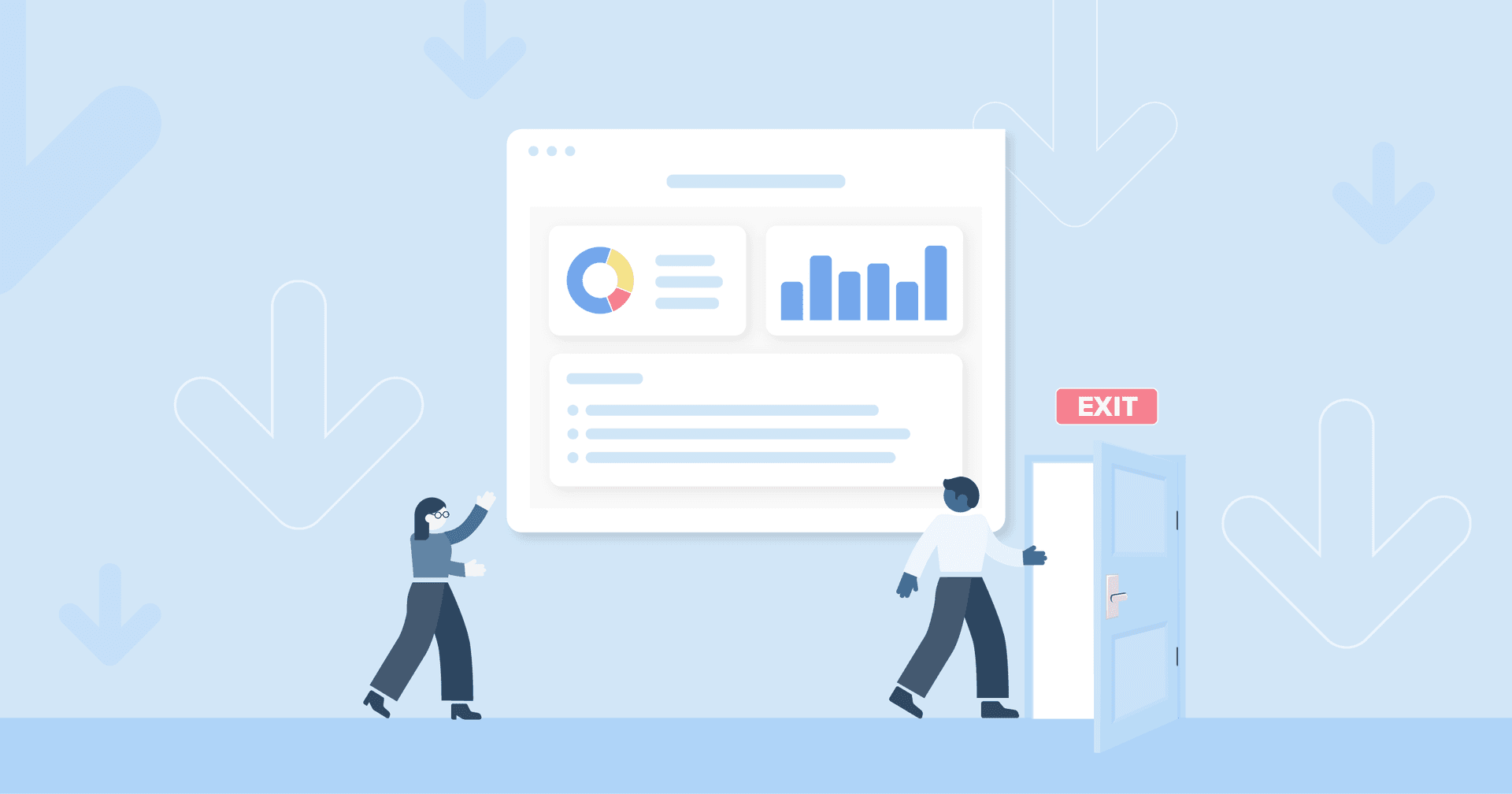Table of Contents
QUICK SUMMARY:
What are the signs that a client is considering ending their relationship with your agency? What's the best way to encourage them to stay? And is it possible re-engage churned clients? This article explores the top signs a client is about to churn, empowering your agency to spot them early and avoid losing the relationship. We’ll also share ideas for re-engaging churned customers that will get a dissatisfied client back on board.
Sensing that a client is considering leaving your agency is never pleasant. While some churn is inevitable, it becomes particularly challenging when it catches your agency off guard, disrupting financial stability, resource allocation, and long-term planning.
When a client first shows signs of disengagement, the situation may be tense and emotionally charged. The instinct may be to step back, but this critical moment is actually an opportunity for re-engagement. By leaning in, you'll gain valuable customer feedback, create a more sustainable revenue stream, and mitigate unexpected losses.
In this article, we’ll delve into the early warning signs of client churn and share effective re-engagement strategies to secure their long-term support.
How Does Client Churn Affect an Agency?
While the reasons for churn will vary, one thing is for certain–it has a trickle-down effect on your agency’s operations.
Think about it this way:
Each Departing Client Represents a Direct Loss of Revenue. In other words, each time your customer database shrinks, there’s a dent in your cash flow and even financial stability.
Customer Acquisition Costs Add Up Pretty Quickly. The more frequently you need to replace lost clients, the more you will need to spend on these activities (e.g., PPC advertising, hiring sales resources). This cycle may create a burdensome loop where acquisition costs outweigh the revenue generated, making it difficult to maintain profitability.
High Churn Rates May Lead to Lower Staff Morale.Your team members could become demotivated if their efforts are not leading to long-term client relationships. In turn, this may reduce productivity and increase turnover.
The Onboarding Process for New Clients Could Become Time-Intensive. This may divert your resources from focusing on existing clients, which might lead to an even higher churn rate.
Why Do Clients Churn at an Agency?
Why exactly does churn happen? There’s no clear cut answer here, and it really depends on the situation.
While one churned customer can’t afford your services due to an economic downturn, another thinks they’ve scored a better deal at another agency.
Generally speaking, there are 3 most common reasons for churn:
Reason | Description |
|---|---|
Lack of Results | If a client doesn’t see enough campaign traffic (e.g., enough leads or revenue), they may experience reduced customer satisfaction. In turn, this leads to churn later on. |
Too Little Communication | Let’s face it–communication makes or breaks relationships. If there aren’t enough touchpoints (e.g., regularly scheduled 1:1 meetings), it may lead to a compromised customer experience. |
No Perceived ROI | If existing customers feel that your services are too expensive relative to the value they receive, they may explore other options. Over time, it has potential to lower your customer retention rate. |
Proactively addressing issues within each of these 3 most common reasons for churn will help to reduce the risk. The good news is that many of these factors are easily improved by comprehensive client reporting. By effectively demonstrating the results your agency achieves with thorough, consistently scheduled reports and dashboards, your agency instantly underscores ROI and keeps the lines of communication open.

Create custom client reports in 11 seconds with Smart Reports from AgencyAnalytics! Clearly demonstrate agency ROI and schedule reports to be delivered according to your desired cadence. Try it free for 14 days!
4 Signs a Client Is About To Churn (And What To Do About It)
Beyond laying the groundwork for ongoing healthy communication and delivering results, is there a way for agencies to know ahead of time that a client is about to churn? Here are some tell-tale warning signs, along with tips to re-engage your client.
1. They’re Scarce in Communication or Non-Responsive
It’s unsettling when you’ve tried to reach out to a client and they’re not returning your calls or replying to emails.
It’s a place of ambiguity. There could be multiple reasons, some of which aren’t as catastrophic as they seem. Maybe they’re just swamped and forgot to reply (life happens).
That said, it’s a cause for concern when it becomes a pattern, especially when a client is usually prompt with replies or eager to engage with your agency.
Here’s what it looks like:
A Significant Drop in Communication Frequency: A disengaged client may take much longer than usual to respond to your calls or emails (e.g., days instead of hours). They may also not reply at all.
One-Way Communication: If your client used to regularly initiate communication (e.g., follow-ups, meeting requests) but has stopped doing so, it could be a sign of waning interest.
Reduced Engagement During Interactions: If the client provides minimal feedback or shows disinterest in discussions, it might indicate they are not as invested as before. It’s also concerning if they miss scheduled meetings altogether.
Solution: Reach out Through Personalized Messages
If your once highly responsive client seems unsure about your agency, focus on personalized messaging. It’s best to be approachable but direct–it may actually prompt them to respond and honestly share their thoughts.
We have a really open and honest conversation with clients at this stage. We have found it to be the best, most efficient and direct way of dealing with the issue. There are lots of things that you can do (over-servicing them, over-delivering, getting closer to them etc.), but in reality, the best way for us to re-engage clients has been to be direct and ask them outright what's going on and if there's something we can do to salvage the relationship.
James Robinson, Managing Director, Hello Starling
Wondering how to start the conversation and create impactful follow-up emails? Here are some tips to follow.
Step | Description | Example |
|---|---|---|
Start With Personalized Communication | Craft a thoughtful, personalized message referencing specific details about their account or recent interactions. | “Hi James, I hope everything is going well on your end. I noticed we haven’t connected in a while, and I wanted to touch base regarding your SEO campaigns.” |
Schedule a Call or Meeting | Propose specific times for a call or meeting to discuss their account and any concerns. | “I’d like to schedule a call to discuss how we can continue to meet your needs. Would Tuesday at 2 PM work?” |
Offer Value in Your Communication | At this call or meeting, share valuable insights, recent successes, or industry trends that could benefit their business. | “I came across an interesting trend that could impact our strategy. I’d love to discuss how we can leverage this to your advantage.” |
Show Empathy and Understanding | Acknowledge their busy schedule and offer flexibility in communication. | “I understand that things can get hectic, and I appreciate the time you take to connect with us. If there’s a better time for us to communicate, please let me know.” |
Address Potential Issues Directly | Address suspected issues with your services directly, offer solutions to regain their trust, and mention a call to action. | “I want to ensure that we’re providing the best possible service. If there’s anything you feel we could do better, don’t hesitate to reach out via phone or email.” |
Follow Up After Enough Time Has Passed | Follow up after a reasonable period if you don’t receive a response. | “I wanted to follow up on my previous message. I’m keen to connect and discuss how we can continue to support your goals.” |

House client communication and data-tracking efforts in one place. Integrate AgencyAnalytics with your favorite messaging app–explore the full range of features, free for 14 days.
2. They Express Dissatisfaction With Results
A little pushback or constructive criticism is expected from time to time. After all, no agency is perfect.
That said, it’s a cause for concern if your client frequently complains. This could be about the performance of their campaigns, the quality of deliverables, or even your pricing. Plus, it’s difficult to perform optimally when you’re met with constant doubt, a lack of trust, or hostility.
An unhappy client could also become more nit-picky than usual. Instead of agreeing to your recommendations, they may constantly ask for changes in strategies, creative assets, or related campaign elements. It may cause undue stress for your staff and escalate into a toxic client situation.
Many toxic clients have a low-trust culture. This leads them to question everything we propose, examine everything we do for issues, and focus excessively on the negatives. The tone of the queries demonstrates a low-trust confrontational approach rather than a high-trust collaborative approach based on mutual respect.
Daniel Noakes, Founder, UClimb
Solution: Use Data To Show What You’ve Achieved So Far
Data is your agency’s greatest ally. From hitting your client’s lead gen goal to acquiring more social media followers, it’s important to show exactly what you’ve achieved.
Even if current results don’t meet client expectations, sharing how clients are tracking towards their goals may quell doubts and re-instill confidence. If you’ve had a previous track record of achieving targets, share it again! It’s a good reminder and helps clients remember what you’re capable of.
When we detect signs of potential churn, we request a special meeting and come prepared with a plan supported by data. We provide real insights, outline what we will measure, and explain how these actions will impact their business. It's crucial to present a clear roadmap and demonstrate that we are committed to achieving results, showing that we genuinely care about their success. This approach not only addresses their concerns but also reaffirms our dedication to their goals.
Sergio Bisio, CEO, SB8 Group

Show dynamic goal progress across social media platforms, PPC campaigns, call-tracking efforts, and more. Present visual insights that clients will easily grasp–try AgencyAnalytics today, free for 14 days.
Many clients aren’t marketing experts. Be sure to contextualize their results, especially if more time is needed to generate traction (e.g., moving your client’s website up the SERPs). A bit of explanation goes a long way to prevent churn and poor customer service.
3. They’re Unsure Whether Your Agency Is the Best Fit
Not all agency-client relationships work out.
Sometimes, there are misaligned expectations or a cultural divide. Other times, it could just be that your agency isn’t equipped to meet a client’s business needs.
For example, say you’re an advertising agency that’s well-known for out-of-the-box creativity. You’ve consistently demonstrated your ability to market client products and services, which caught the attention of an enterprise-level SaaS company.
They want to revamp their conservative brand image, attract new customers, and retarget ones with a previous purchase history. While it isn’t exactly your ideal client profile (ICP), it seems like a good opportunity. Plus, it also helps that you’ve got previous experience working with subscription-based businesses.
After a few weeks, it’s apparent that this client still prioritizes risk-averse strategies. While you’re able to create relevant content, the client feels that most of your designs are too “out there”, which has resulted in way too many revisions.
It’s causing friction in the relationship, and your team’s creativity feels stifled. Plus, it doesn’t help that the client’s brand awareness goal isn’t being met. The client has expressed doubts about whether they want to continue the partnership, which means–you guessed it– potential churn.
Solution: Assess the Agency-Client Relationship
In these scenarios, get the team together and discuss what’s happening. As they say, two heads are better than one. Plus, when a cross-functional team is involved, there’s the possibility of internal siloes. Airing out any challenges or concerns fosters collaboration and may help to reduce the number of lost customers.
Let’s take the above example. Instead of jumping straight into a brand overhaul, a phased approach is a good middle ground.
Your Graphic Designer could work on more conservative designs and gradually introduce bolder elements. That way, it doesn’t confuse the audience or go way beyond the client’s comfort level. Based on the campaign's traction, your Media Buyer is better equipped to make bidding adjustments and help the client meet their goal.
After devising this solution, present it to the client and see if they’re on board. It shows that you’re adaptable and willing to make adjustments as needed.
When any signs of dissatisfaction are detected, we implement a standard operating procedure (SOP) that involves gathering everyone involved in the account—designers, media buyers, analysts, and strategists—for a confidential discussion to truly understand their perspectives. We then consolidate these insights in a meeting, set KPIs, and activate a strategic plan to overcome the issues at hand. This process resolves tensions and strengthens our team's capability to handle future challenges.
Sergio Bisio, CEO, SB8 Group
That said, sometimes a client just isn’t a good fit–here’s another way this meeting may have gone.
During extensive discussions, your team members reveal that the client contacts them after hours, requests excessive revisions, and is overly demanding. It’s putting a dent in morale and employees are starting to feel burnt out.
If this is the case, it may be better to cut your losses and let go of a toxic relationship (of course, according to the terms of their agreement). After all, you don’t want one client to erode your entire agency culture.
4. The Energy is Tense During Meetings
Energy doesn’t lie. Sometimes, there’s tension in the air, even if you can’t quite put your finger on what’s happening.
It may be hard to know why, but sometimes, you just feel there’s an issue. It's weird to describe, but most agency owners I know have a gut feeling that tells them something isn’t right. It's almost instinctive, and you can't explain it.
James Robinson, Managing Director, Hello Starling
While there isn’t an exact science, here are some non-verbal cues that could be leading to tension in the room (both in-person and virtually):
Change in Body Language or Previous Behaviors: Clients who were once relaxed and engaged might now appear closed off, with crossed arms, lack of eye contact, or at a noticeable physical distance.
Different Tone of Voice: A shift from a friendly, collaborative tone to a more formal or curt manner could indicate client dissatisfaction.
Change in Language Use: Increased use of formal language, jargon, or passive-aggressive comments may mean something is wrong.
Solution: Address Issues Directly and Tactfully
Emotional intelligence is a key part of nurturing client relationships.
If there’s an underlying tension, approach it tactfully, demonstrate empathy, and show that you understand their pain points. The sooner you address the issue, the closer you are to a solution.
Talk to them. Ask them how they're feeling, what they think is going well and where you could improve. Ask them outright if there's a chance the relationship could be coming to an end. Don't second guess or just hope that things will be ok. Talk about it. The reality is, if they're going to churn, it's better to know sooner rather than later so you can focus on making sure the relationship ends positively but also that you can fill your pipeline up in good time to replace the business.
James Robinson, Managing Director, Hello Starling
Instead of ignoring the elephant in the room:
Acknowledge the Atmosphere: If you sense tension, address it directly but respectfully. Ask open-ended questions to understand any concerns they might have.
Schedule a Meeting: Sometimes, a dedicated time to discuss the project and any concerns helps clear the air. Ensure it’s a comfortable environment for open communication (e.g., your private boardroom that’s away from other employees).
Active Listening: Practice active listening during meetings. Validate your client’s feelings and show empathy to build trust.
Body Language Awareness: Be mindful of your own body language. Show openness by maintaining eye contact, leaning slightly forward, and keeping your arms uncrossed.
Follow-Up: After addressing the concerns, follow up with the client to show that you’re committed to resolving any issues and improving the relationship.
Have a System in Place To Ensure Data Transparency and Build Trust
As we’ve covered, identifying client churn is often tricky. Sometimes, a client may simply have a lot happening and isn’t ignoring your correspondence. In other cases, it’s clear they’re exploring other options, unhappy with their results, or unsure whether your agency is the best fit.
Either way, it’s important to gather feedback, explore possible re-engagement efforts, and prevent churn down the line. Most times, this boils down to tactful, strategically timed communication.
Most companies understand that you are not responsible for fluctuations in supply and demand. However, if you fail to consistently communicate what you are working on, the reasons behind your actions, how you are doubling efforts to improve, and what the next steps will be—measuring and accomplishing these steps—clients will likely leave.
Sergio Bisio, CEO, SB8 Group
Effective communication involves more than words; it’s also about sharing numbers. After all, clients need to see tangible progress. And let’s be honest–manually compiling data leads to inaccuracies, typos, and more headaches when the reporting period rolls around.
Instead of resorting to this tedious process, invest in an automated solution like AgencyAnalytics. It’s a way to strengthen retention and even re-engage churned customers. Use it to:
Automatically consolidate insights across 80+ platforms.
Schedule reports in advance to ensure clients receive their data on time.
Streamline client communication via integrations like Zendesk, Intercom, and HubSpot.
Share 24/7 dashboard login access to ensure data transparency and build trust.
Customers churn–it’s a reality. However, a robust system like AgencyAnalytics is a way to visualize metrics, show historical trends, and demonstrate your ability to achieve tangible results.

Streamline data-tracking, keep clients in the loop, and prevent future churn. Ensure customer success through a solid reporting process–try AgencyAnalytics today, free for 14 days.

Written by
Faryal Khan is a multidisciplinary creative with 10+ years of experience in marketing and communications. Drawing on her background in statistics and psychology, she fuses storytelling with data to craft narratives that both inform and inspire.
Read more posts by Faryal KhanSee how 7,000+ marketing agencies help clients win
Free 14-day trial. No credit card required.






